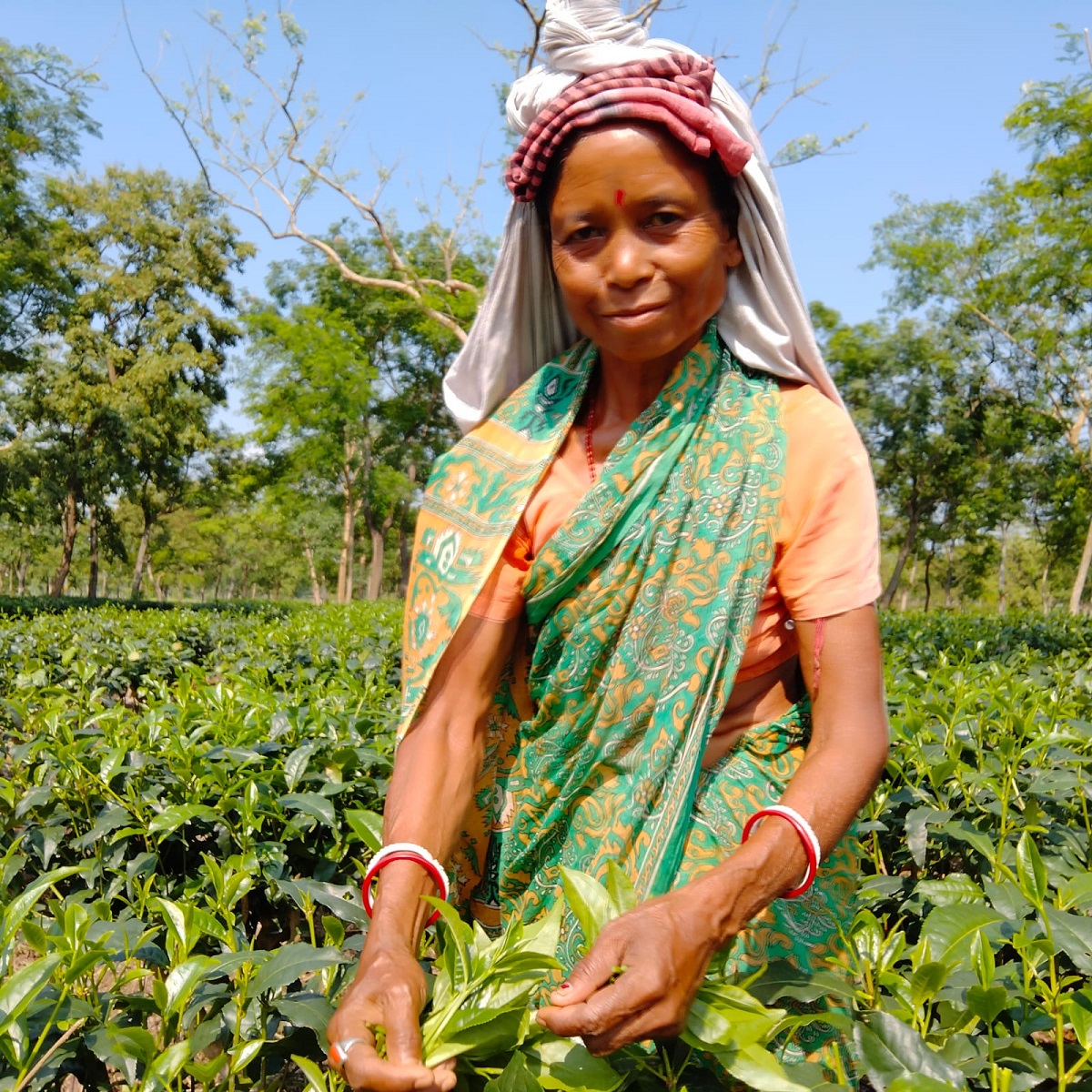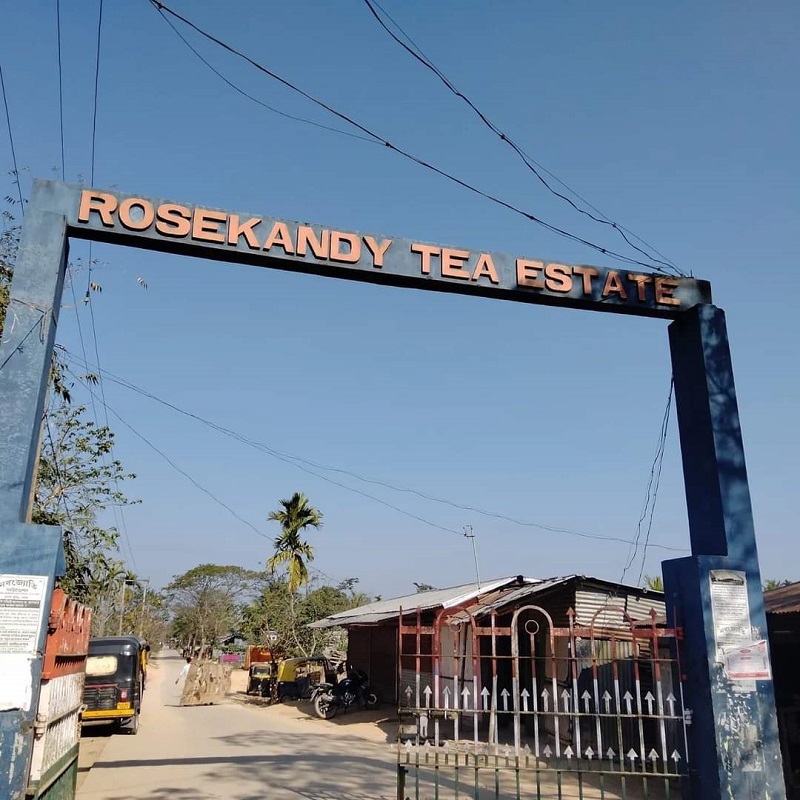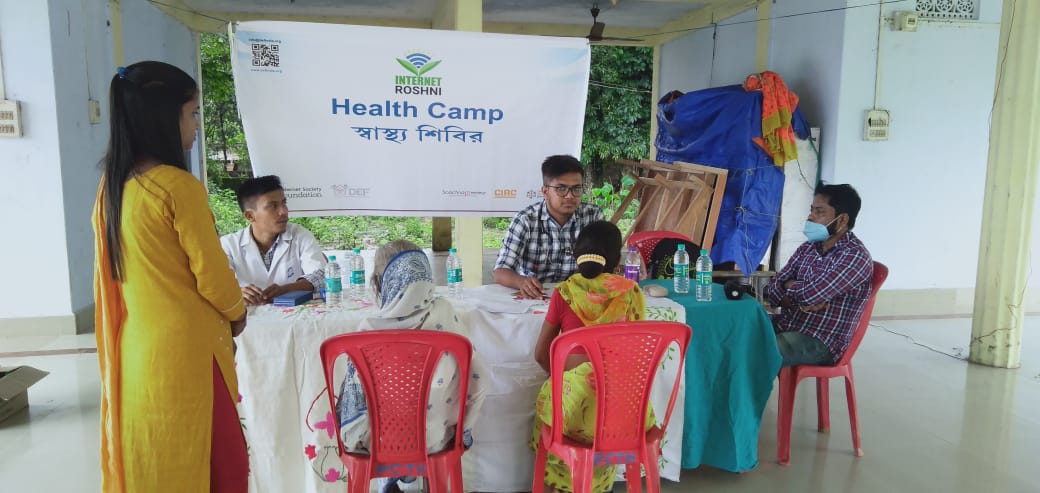
Assam has been providing India and the rest of the world with high quality tea for the last 150 years now. Any visitor going to Assam will experience the aroma and savour the unique malty flavour of Assam tea. Among the 140 tea estates of Barak Valley, Rosekandy Tea Estate has made a place of distinction for its good management, healthy relationship with labourers and also for its social obligation. The estate has been known for the production of best quality green leaf tea selling 800,000 kg annually in the valley market. In fact, it is a dominant brand and quite popular across the country. Assam tea is harvested twice a year and the first flush is picked around the end of March. The second flush is sweeter and generally considered to be superior to the first flush. This harvest happens around mid-May to end-June and this is when the best quality tea is produced. I got an opportunity to visit this beautiful tea garden in the first week of June to support DEF’s Health Camp and tea tribes’ community development work. DEF has started working on digital empowerment of tea tribes under a project called Internet Roshni with 50 tea gardens of Assam including Rosekandy tea estate. We are working here to improve access to connectivity and network in tea gardens for the community through enhanced mobile data networks channelled through community internet libraries.

During this visit I saw Rosekandy tea, which is mostly black, with very little quantities of green tea being produced here. Many estates of barak valley produce premium quality single origin tea, large quantities of which are exported.
This tea production in this estate was started by the Colonial Government to meet the supply of growing demand for tea in the global market. To work in the tea gardens, labourers were indentured from various places. But the labourers were subjected to inhuman conditions of living and the women labourers faced gender discrimination as far as wages were concerned. They received less pay than their male counterparts. In the contemporary pan- Indian context, it is observed that the tea gardens are facing the problem of sickness and abandonment which created a socio-economic hazard in the life of the tea garden workers. The immediate upshot of sickness and closure of tea gardens fell directly on the workers, their family members and particularly children belonging to socially and economically marginalised tribal and nontribal communities. Most of the tea garden workers suffer from rampant hunger, poverty and unemployment, problems like illiteracy, drop-out, malnutrition, and various incurable diseases combined with the effect of vulnerabilities of trafficking of children and women in particular are prevalent.
Most of the tea plantation workers are engaged as permanent workers and others are casual, daily or seasonal workers. According to key informants, there is no job hierarchy among tea plantation workers. All workers are regarded as tea plantation workers and the management deploys them as per the need of the garden and their personal wishes. The remaining workers work as security guards, factory workers and domestic workers in managers’ homes.
The cash remuneration of tea plantation workers is calculated weekly based on daily performance. Most of the workers get paid weekly. A plucking worker is required to pluck 23 kg (varies from 18 kg to 24 kg) of leaves a day and if they fail to achieve the target or Nirik, remuneration may be cut proportionately. If the performance is higher than target, additional remuneration (INR 2 to 3 per kg) is paid. Other work is also target based and remuneration depends upon the performance except in factory work, security and domestic work in managers’ residences. In addition to cash remuneration the plantation workers receive a number of benefits from their employers. Ramlal Nunia, one of the workers has been residing here for the last 30 years and said that they receive support like 3 kg of rice or flour as ration per week, free accommodation, and medical services.

Tea plantation workers identify themselves as a distinct group. However, within the tea plantation community, there are sub-groups based on their origin and ethnic identity. In some instances, norms and customs vary within the same religious group. British companies brought workers from different states of India and they still identify with those ethnic identities.
During a discussion with community leaders it was found that the tea garden communities are conversant in ten languages. They have their own mother tongue, which has now evolved to incorporate elements of the local language. Workers who originate from the Indian state of Odisha usually speak in Deshali, which is in fact a mixture of Bangla and Oriya. Another group of workers was found who speak in modified Hindi. Few speak in Assomia, Munda, Orang, and Santali languages. In spite of the existence of those languages, the workers are found to be familiar with a language that has been formed as a mixture of Bangla, Deswaly/Deshali, Hindi and Assomia commonly known as the ‘language of tea garden’. Tea community leaders observed that due to lack of practice, their languages are disappearing.
A large proportion of the garden labourers still reside in kutcha and semi pucca houses. Open field defecation is still widely practised in the area, making the labourers vulnerable to numerous health complexities.
The monsoon season is not looked upon favourably by those working in the garden area (one of the workplaces in the tea estate apart from the factory), female pluckers suffer the most due to a number of issues. The main being inaccessibility to safe menstrual hygiene practices.

Among the unconnected communities across the world and India, the communities who have been traditionally working in Tea Gardens, are mostly tribals of various origins, dialects and are remotely located, mostly unconnected from the power of information, knowledge and rights. At DEF we are excited to finally get a chance to engineer a project that is designed to create a model to link the tea garden communities to the information world and knowledge economy. The model is simple: identify a community leader, preferably a woman with entrepreneurial knack, train and capacitate her in all possible digital tools and linkages, give her connectivity to digital infrastructure, and means to empower at least 2,000 community members around her in one year. We are starting with 50 Internet Roshni Entrepreneurs at as many locations in 5 districts of Assam.










